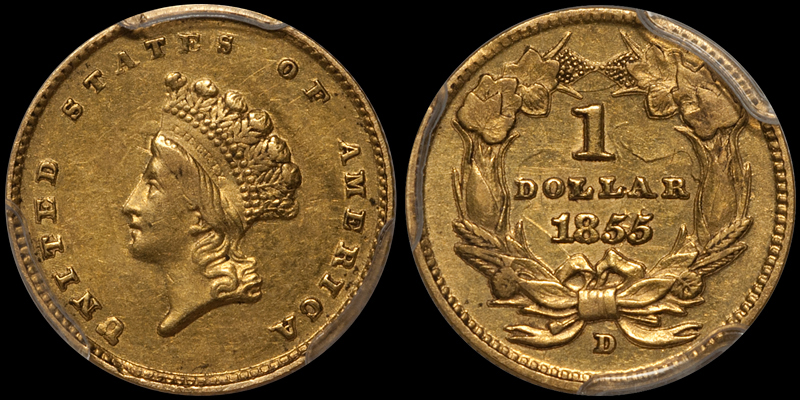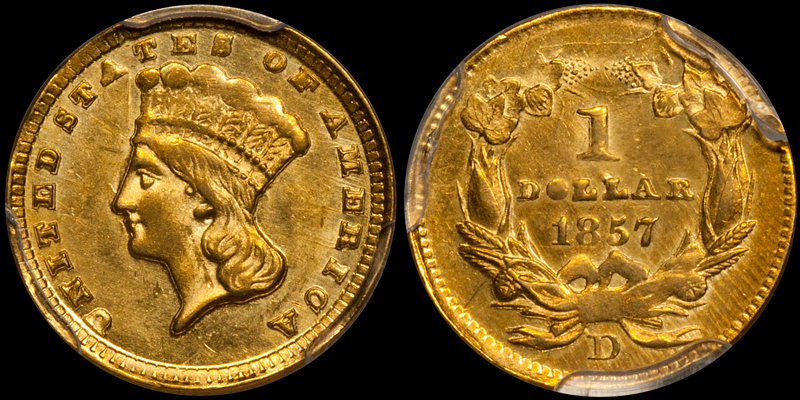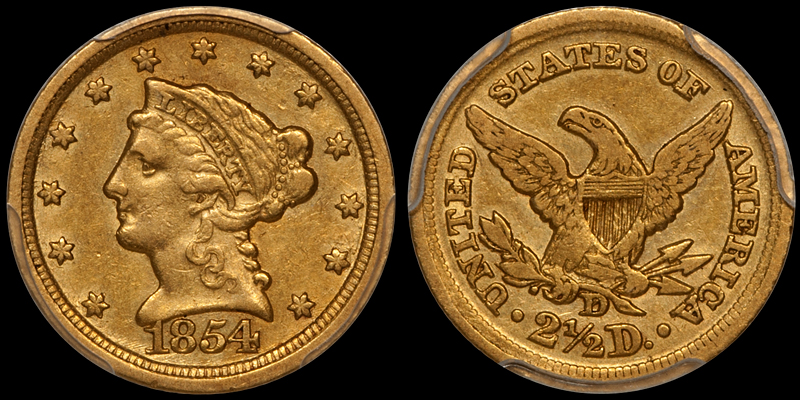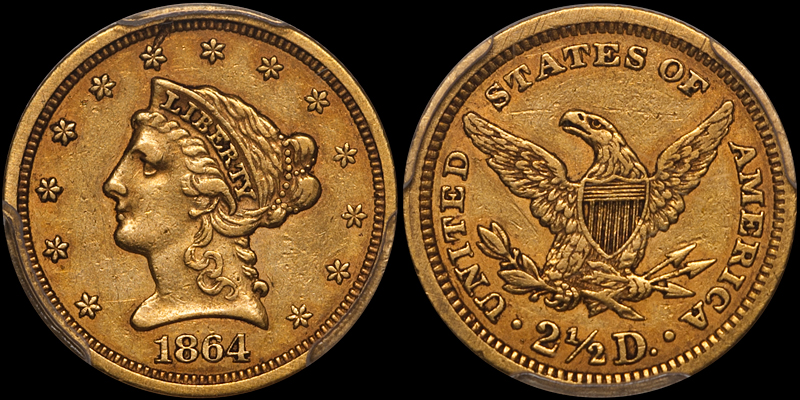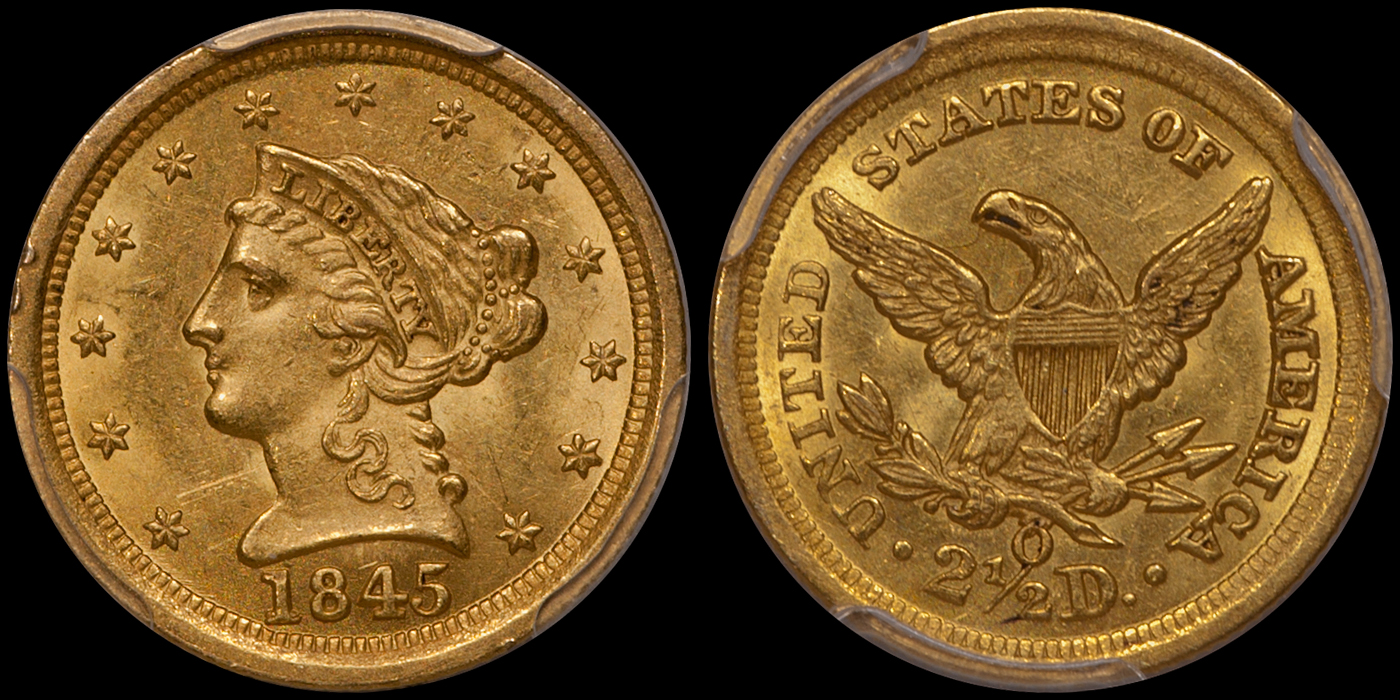Gold Coin Rarity: What We Can Learn From the Hansen Collection
/Part One: Gold Dollars Through Three Dollar Gold
The once-in-a-generation US coin collection being assembled by Dell Loy Hansen and David Lawrence Rare Coins gives students of rarity an unusual opportunity to determine the condition rarity of many issues.
Assuming that Mr. Hansen is placing an equal emphasis on many—if not all—series of US coins, studying the grade of his current #1 coin(s) helps us to make important observations about rarity: namely, that if a specific coin in the Hansen Collection is low grade, it is very likely a condition rarity.
Of course, there are exceptions to the rule. Through sheer happenstance, a common issue might be overlooked and a coin which Hansen owns in, say, EF45 might have been available in AU55 a number of times during Hansen’s buying phase. With a collection as vast as this—it includes all regular issue US coins from 1793 to date—it is certain that a small but significant number of issues get overlooked. And, there are certain series than Hansen had the good fortune of buying an all-time great set—Liberty Head double eagles comes to mind—which enabled him to add great coins to his collection which he otherwise wouldn’t have had access to.
Let’s take a look at each denomination of US gold and determine which coins in the Hansen Collection are the lowest graded; or which are missing as of the date this blog is being written (late March, 2017). I’ll add some personal insight into each coin. Please note that this blog is focused on Liberty Head gold. If enough people show interest, I will expand this to include early gold and 20th century issues. Also, I have skipped Proofs as this is an area which is a more recent target of Hansen’s and there are a number of holes which are likely to be filled in the coming years.
I. Gold Dollars
There are a total of 76 issues in the PCGS One Dollar Gold Basic Set, Circulation Strikes (1849-1889). The Hansen Collection contains all of these with 10 coins graded below MS60. Seven of these grade AU58, and the lowest are graded AU53.
an 1855-D $1.00 in PCGS AU53 with CAC approval, sold by DWN in 2014
The two lowest grade gold dollars in the set are the 1855-D and the 1856-D, both of which are AU53. The 1855-D is the single rarest issue in the set in higher grade but there have been a number of examples graded higher than AU53 offered for sale since Hansen entered the coin market. The same holds true for the 1856-D which is more available than the 1855-D. In fact, PCGS has graded 38 finer than AU53 including seven in Uncirculated.
The next lowest graded is the 1857-C, which is an AU55. PCGS has graded 14 higher than this, and it would be reasonably easy to upgrade to an AU58 but fairly difficult to locate an Uncirculated example; PCGS has graded just four with the best a solitary MS62.
an 1857-D $1.00 in PCGS MS61 with CAC approval, sold by DWN in 2016
Three dates in the collection graded AU58 are from Dahlonega (1852-D, 1857-D, and 1858-D) and all have reasonably healthy populations in higher grades (17, 14, and 28, respectively).
My conclusion is that Mr. Hansen has not been focused on gold dollars, although he owns an impressive array of MS67 through MS69 common dates from the Philadelphia Mint. I am guessing that he hasn’t been offered any interesting sets of PCGS graded Dahlonega gold dollars, and that most of the interesting high(er) graded Dahlonega gold dollars which exist haven’t been offered for sale since the collection was initiated.
One quick observation about Dahlonega gold coins in general is that the Hansen Collection is somewhat weak when it comes to these. The reason(s) for this is twofold. First, the Dahlonega market is very collector-oriented and many of the top quality D mint coins either trade among high-level collectors or are sold by dealers who may not do much business with Hansen. Secondly, in the three+ years during which Hansen has been most active, not many great Dahlonega coins have been available.
II. Quarter Eagles
There are no less than 136 different issues which make up the Liberty Head Quarter Eagle Gold Basic Set, Circulation Strikes, 1840-1907. The Hansen Collection is complete except for two issues with numerous issues grading below MS60.
an 1854-D $2.50 in PCGS EF40 CAC, sold by DWN in 2017
The two issues missing from the set are the 1840-D and the 1854-D. The former is not a total surprise as it is among the rarest quarter eagles from this mint. Since Hansen has been active, not a single nice PCGS graded 1840-D has appeared for sale at auction. The 1854-D is a bit more of a surprise as it is actually more available than the 1855-D and the 1856-D; two issues which I have sold to Hansen. It is interesting to note that, as with the gold dollars (see above), Dahlonega issues represent a weakness in this otherwise very strong collection.
The next lowest graded quarter eagles are as follows:
1864: No Grade (cleaned)
1841-D: VF35
1854-S: VF35
1863-S: EF45
1844-D: AU50
1845-O: AU50
1856-D: AU53
Nine coins in the collection grade AU55.
an 1864 $2.50 in PCGS EF45 cac, sold by DWN in 2017
The 1864 is a very rare issue but I am surprised that the current example in the collection is a polished No Grade. There was a PCGS AU58 which sold for $79,313 as Heritage 2017 ANA: 4092 which would have been the perfect coin for Hansen; I’m surprised this coin slipped through the cracks but I would imagine numerous big ticket items were on his radar at the 2017 ANA show.
The 1841-D is a very scarce date but there apparently hasn’t been a nicer one available for the collection (although I’ve offered at least two finer ones on my site since 2017). The 1854-S seems low grade to the casual observer, but this is actually among the finest known for this rarity and it is a terrific coin.
The 1863-S is fairly scarce but I’d expect a better coin in the collection than an EF45. But since the beginning of 2016, the only PCGS graded examples available have either been low grades or no grades, meaning that this issue needs to be upgraded.
an 1844-D $2.50 in PCGS AU58 with CAC approval, sold by DWN in 2015
The relatively low grade AU50 1844-D is happenstance; an issue which has fallen through the cracks as better ones are available with some regularity. (In Mr. Hansen’s defense, with thousands of issues to monitor, even if a small percentage falls through the cracks, we are still talking about dozens—if not more—of coins which could seemingly be improved.)
an 1845-O $2.50 in PCGS MS with CAC approval, sold by DWN in 2018
The 1845-O presents an interesting question, namely why is this coin just an AU50? According to my records, I’ve sold no less than six of these in AU55 or higher since 2016, including a PCGS MS61. This is an important issue (it’s the rarest New Orleans quarter eagle) so I expect Mr. Hansen will upgrade it at some point in the future.
Overall, the Hansen Liberty Head quarter eagle collection is impressive with a number of excellent coins, but I wouldn’t consider this to be one of his strengths.
III. Three Dollar Gold
The $3 Gold No 1870-S Basic Set, Circulation Strikes (1854-1889) consists of 40 different coins. The Hansen Collection is complete and every coin grades at least MS61; only five graded lower than MS64.
The most impressive sub-sets in the Hansen Collection are areas in which his interest and availability have intersected. In conversations with Mr. Hansen, I became aware of his keen interest in the Three Dollar series. If you couple this with the availability of important high-grade coins as the result of the sale of the Great Lakes/Pogue set in February 2016, you have the impetus for the formation of likely the second finest set of business strike Threes ever assembled. (Note: had Hansen been active by early 2016—and had he been as interested in Threes at that time as he had become by early 2017, I don’t doubt that he would have purchased most of the Pogue Threes directly from the auction.)
To no one’s surprise the lowest graded coins in the set are as follows:
1854-D: MS61
1854-O: MS61
1860-S: MS62
1855-S: MS62+
1856-S: MS63
an 1860-S $3.00 in PCGS MS62 sold by DWN in 2012
Not including the unique 1870-S, there are six mintmarked Threes in this set and all are rare to very rare in Uncirculated. Virtually every example is solidly in the Condition Census and there is little Hansen can do to improve this quintet. Sure, he can upgrade the 1856-S from MS63 to MS64, but is this really a sensible way to spend money? Probably not, unless a newly-discovered coin comes to market which is clearly the finest known for this date—or for any of the other four listed above.
In studying the Hansen set of Three Dollar gold, I see literally just one date which should be upgraded: the MS64 1863. There are some really nice examples of this date known including the Akers MS67 and the Pogue/Jung MS68.
an 1856-S $3.00 in PCGS MS64 sold by DWN in 2018
Overall, the Hansen set of business strike Three Dollar gold is extremely impressive and it certainly ranks as a highlight of his total collection.
Coming in Part Two: I examine the Liberty Head half eagles, eagles and double eagles in the Hansen Collection and try to make sense of what we can learn about condition rarity from the coins in this incredible set of US coinage. Your comments are always welcome!

